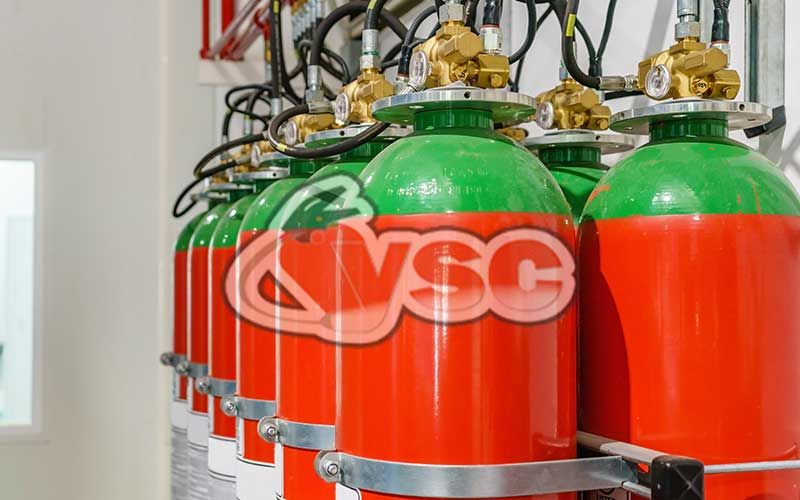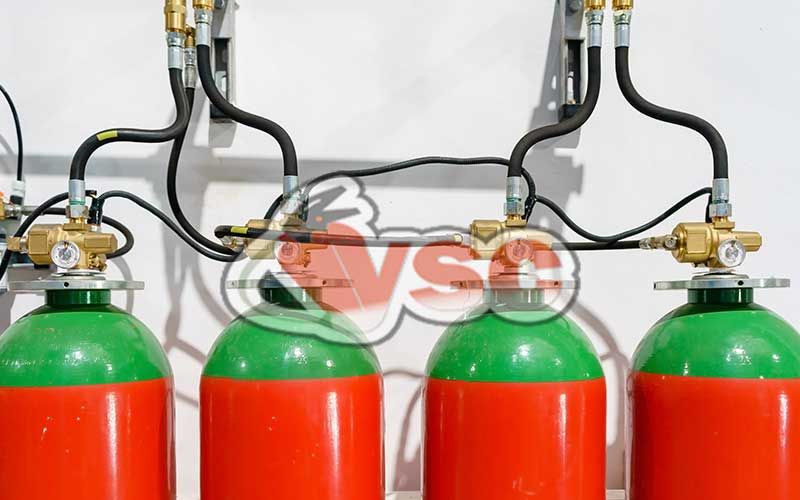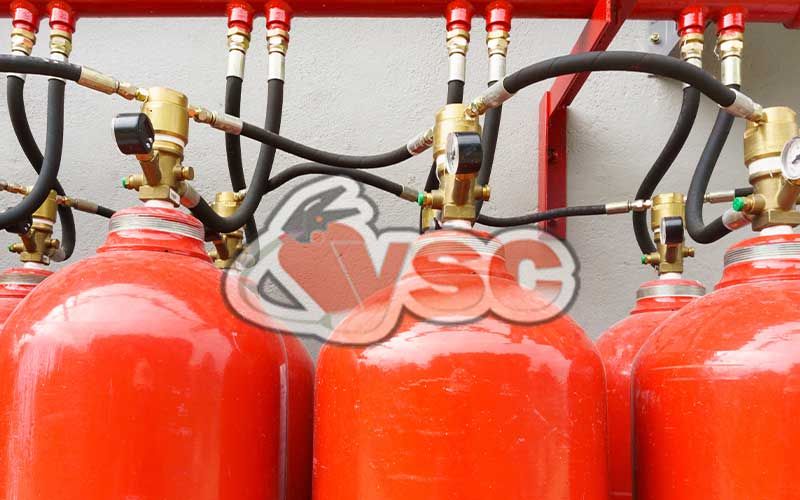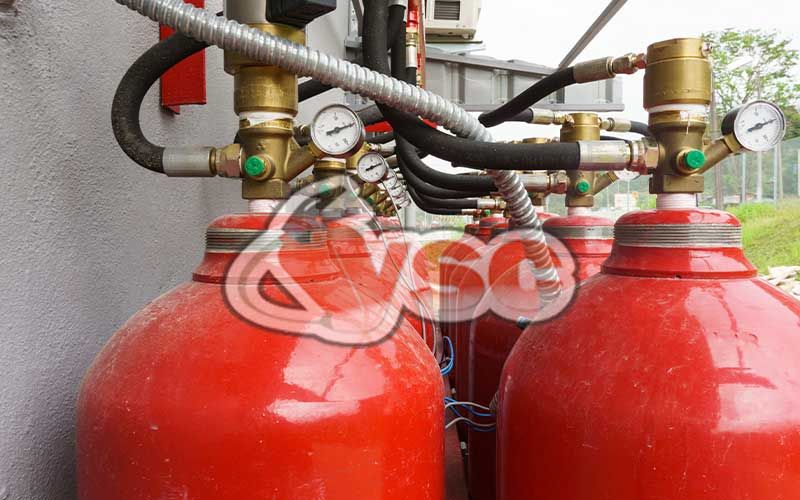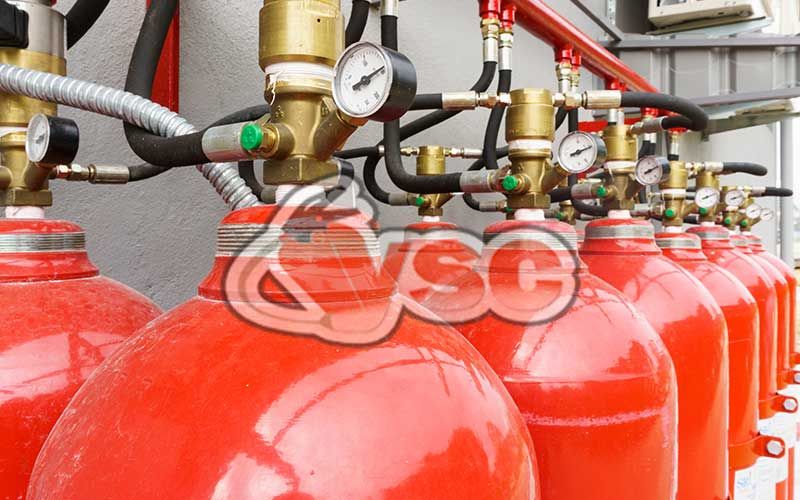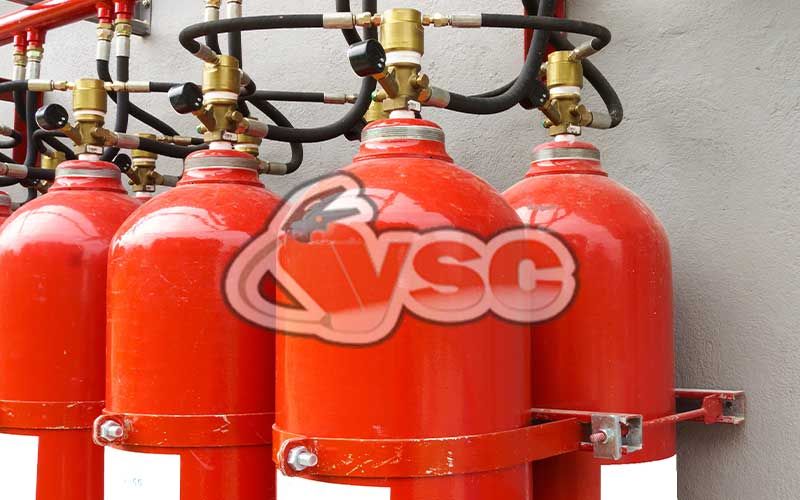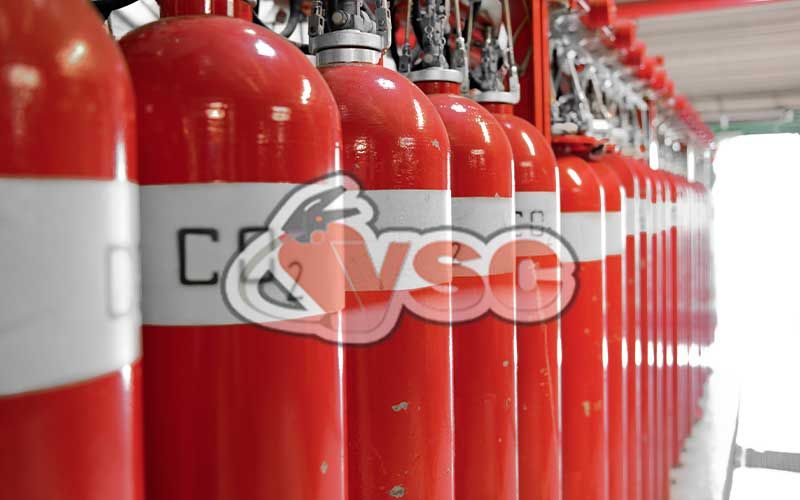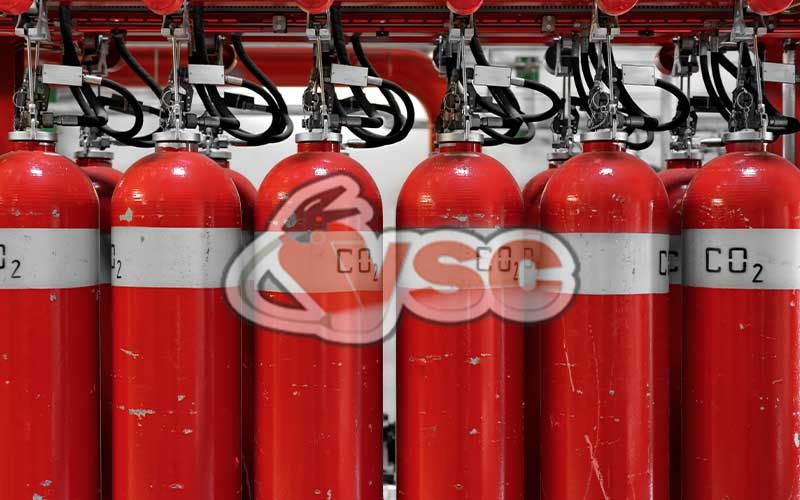Carbon Dioxide Extinguishing Systems, CO2 (What is it? How is it used?)
Carbon Dioxide Fire Suppression Systems (CO2) are commonly used in areas where there are no people present and they have an effective fire extinguishing capability. When released, carbon dioxide cools down the heated air in the fire zone. As it is known, the growth of fire is caused by the interaction of flames with oxygen. Carbon dioxide is highly effective because it disrupts the connection between fire and air by reducing the oxygen level in the area.
Carbon dioxide fire suppression systems can be hazardous to humans due to the nature of carbon dioxide. Therefore, it is essential for fire suppression teams to use proper protective equipment and take necessary precautions while using this system. It is crucial for users to be well-trained and knowledgeable to avoid putting their health at risk.
Carbon dioxide gas is a colorless, odorless gas that does not conduct electricity and is one and a half times heavier than air. When released, it leaves no residue and effectively suppresses fire by eliminating the oxygen that fuels the flames. It is important to note that carbon dioxide fire suppression systems are primarily used for local and ongoing fires and can be considered as the only fire suppression system used in such situations.
The purpose of using carbon dioxide fire suppression systems in sensitive areas is to avoid the hassle of cleaning up after its use. Unlike foam, water, and chemical fire suppression systems, carbon dioxide fire suppressants leave the environment clean and without any residue.
Where Are Carbon Dioxide Fire Extinguishers Used?
Since each fire suppression system has specific agents suitable for different types of fires, the use of carbon dioxide fire extinguishers is limited to certain areas. Carbon dioxide fire extinguishers are preferred for Class B and Class C fires and are most commonly used in fires caused by electrical equipment. They are commonly found in laboratories and kitchens because they do not leave any residue after spraying. However, they are not effective for Class A fires.
Areas where electrical equipment is heavily used, such as computer rooms, industrial laboratories, electrical control panel rooms, flammable liquid storage areas, paint booths, engine rooms, cable galleries, power transfer rooms, archives, industrial ovens, generator power sets, and transformer rooms, are suitable places to have carbon dioxide fire suppression systems. It is crucial to ensure that no one is present in the area when using this system, including the fire response team. The fire response team should also take protective measures as the oxygen level in the environment decreases significantly.
Carbon Dioxide Extinguisher Properties
Let's take a look at the features of carbon dioxide fire extinguishers, one of the most used fire extinguishing systems. First and foremost, one of the key features of carbon dioxide fire extinguishers is their high fire suppression capability. The content of these extinguishers is carbon dioxide, which directly absorbs the effect of ignitable gases in the air, making it a fast and effective fire suppression agent. Since carbon dioxide is a natural gas, using it does not harm the ozone layer. Its ability to be used for small-scale and localized fires makes it a preferred choice.
Another important feature to note is that carbon dioxide fire extinguishers should not be used in environments where people are present. Carbon dioxide, even in its natural form, can be harmful to humans, and when used, it reduces the oxygen levels in the surrounding air. Therefore, it is crucial that there are no people in the vicinity when these extinguishers are used, and the individuals using them should wear protective gear, such as masks, gloves, and helmets.
Carbon dioxide extinguishers are effective in suppressing deeply entrenched fires. They are successful in extinguishing fires that continue to burn internally and have ignited even the smallest particles of material. Their non-conductivity of electricity makes them particularly suitable for electrical fires, effectively preventing the dangerous situation of electric shock.
When sprayed, carbon dioxide extinguishers create a cloud of dust in the environment. This natural characteristic helps prevent the flames from coming into contact with oxygen, aiding in the suppression process. These extinguishers have a low cost of refilling, making them budget-friendly. Even during periodic maintenance, the cost remains low, as detecting a decrease in pressure prompts timely refilling. Due to their quick response time, they effectively intervene in fires and can be fully discharged within a minute.
Co2 Fire Extinguishers
Regarding CO2 fire extinguishers, they are commonly found in schools and official government institutions. They are often used in places where there is no risk of chemical fires, such as simple offices or buildings, and they meet the TSE standards.
Carbon dioxide extinguishers come in various sizes, including 2 kg, 5 kg, 10 kg, and 30 kg options. They can be either manually carried or equipped with wheeled mechanisms for heavier types. The 10 kg and 30 kg variants undergo a hydrostatic pressure test and leakage test to ensure safety before being delivered.
-
FM-200 Gas Fire Suppression Systems
-
Kitchen Hood Fire Suppression Systems
-
Sprinkler Fire Suppression Systems
-
Carbon Dioxide Extinguishing Systems, CO2 (What is it? How is it used?)
-
FE25 Gas Extinguishing Systems (Working Principle and Price)
-
In-Panel Micro Extinguishing Systems (Electricity Panel)
-
Clean Gas Fire Suppression Systems (How Does It Work? Gases Used?)
-
NOVEC 1230 Fire Suppression Systems (Gas)
-
Argon Gas Extinguishing Systems (INERT Gas, Turnkey)
-
Vehicle Extinguishing Systems (Tube, Maintenance)
-
Fire Detection and Warning Systems
-
Foam Extinguishing Systems




